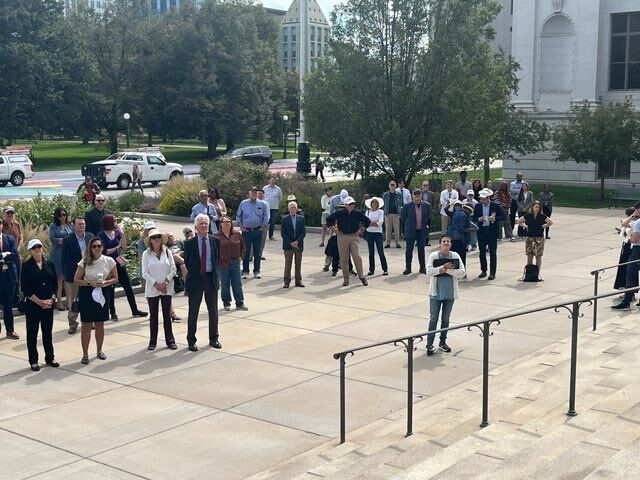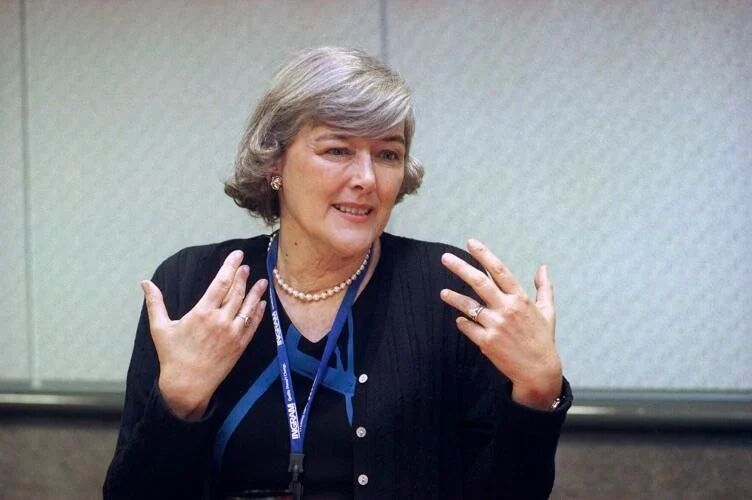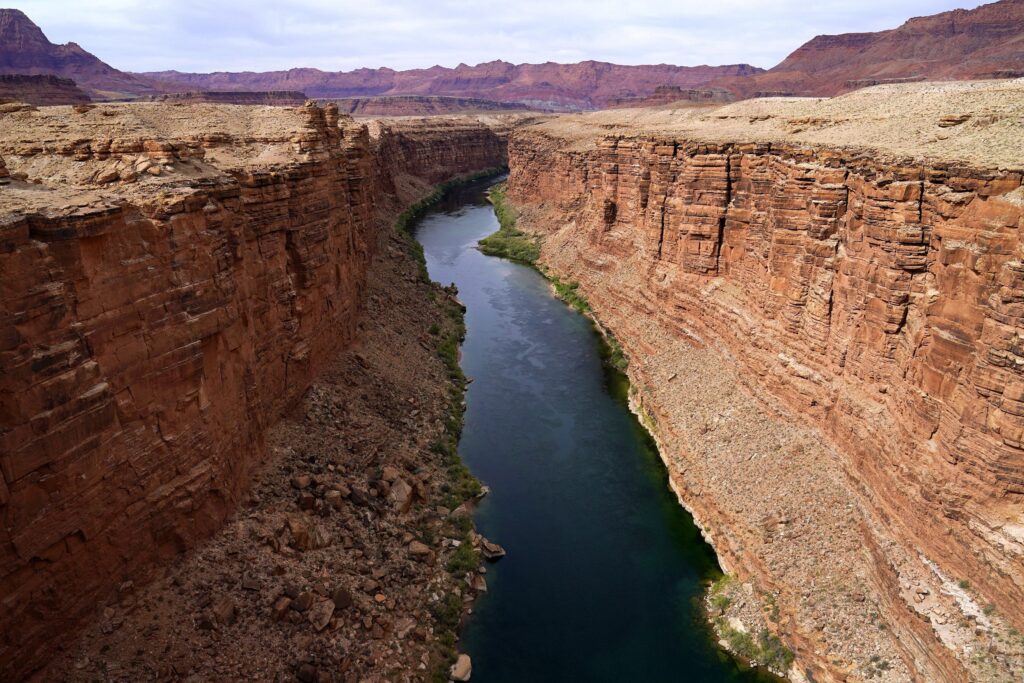Colorado Springs has seen extraordinary population growth over the years. What does that mean for its water supply?
Water flows hundreds of miles to town largely from the Colorado and Arkansas river basins, nurturing the growth of shopping malls and homes, and Colorado Springs Utilities officials are constantly working to store, purchase, and conserve water critical for driving growth.
A contentious new water rule adopted earlier this year to guide community growth brought water to the political forefront, and provided a legal measuring stick to gauge whether the city has enough water to serve new additions.
The rule requires the city to have enough water to serve existing development and the demand projected from areas planning to annex, plus a 28% cushion, in order for new parcels to go through the annexations process.
Before the adoption of the rule, Utilities planners worked toward a 30% buffer in water supplies, because it is a best practice and that’s roughly what the rule is based on, Utilities spokeswoman Jennifer Jordan said.
As well levels diminish, El Paso County water providers study multimillion-dollar new Loop system
The rule was a major point of debate in the last city election, because it was expected to block a 3,200-acre development east of Fountain, called Amara, from the annexation process. Since the election, Utilities has recalculated how much water the city consumes on average, and now Amara meets the rule and is planned to go through the annexation process, The Gazette reported previously.
Fountain could see halt in future development because of a lack of water infrastructure
Colorado Springs City Councilwoman Nancy Henjum, who was the deciding vote on the rule, says she supports it because it has helped place emphasis on water.
“It keeps us in really great awareness we don’t have unlimited water resources,” she said.
Since its adoption, the water rule has faded in public discussions. But Amara will be back in the public eye again when it comes before the Colorado Springs Planning Commission. It could have a hearing in November, but more likely will be in December or January, City Planning Director Peter Wysocki said.
Northern Delivery pipeline expected to start moving water to eastern Monument by midsummer
Another major possible annexation in the early planning stages is Karman Line, an 1,834-acre parcel east of Curtis Road and south of Schriever Space Force Base. The project will not come before the city for several months, said Gabe Sevigny, planning supervisor for the city. A water report on projected use for the project will be prepared when it goes before the Utilities board, he said.
Factoring in the 28% water buffer, the city has 3,864 acre-feet of water to support new growth, Colorado Springs Utilities said in a statement. An acre-foot of water can support about four households annually on average in Colorado Springs. When it is built out, Amara will require 3,506 acre-feet of water a year.
Examining growth in Colorado Springs | Full Coverage
Utilities does not factor in projected water use from future neighborhoods and businesses into its rule, just the actual average use over five years. So the future demands of Banning Lewis Ranch — including the largest portion, 18,000 acres owned by Norwood and Amara, if it’s annexed — will be factored into the calculation as homes are built in those areas over time and they start consuming water.
To meet that future demand, Utilities said in its 50-year water plan it would like to add 41,000 acre-feet of water to its annual supply through steps such as additional storage, water purchases from the Colorado River and Arkansas River basins and conservation. Utilities has a goal to set aside $40 million to support future water acquisition; so far, it has set aside $12.5 million, Jordan said.
Conservation
Colorado Springs has not seen water use rise in tandem with population since 2002. Water use peaked around 2000, when the city was using more than 90,000 acre-feet a year. Now, the five-year average is 71,200 acre-feet.
Much of the drop in water use before 2017 came from the abandonment of landscapes, as rates have risen, Colorado Springs Utilities’ water plan states. At the time, 30% of previously landscaped areas were not maintained, the plan states. Utilities said in the document the trend adds a level of uncertainty for planning.
“There is no reliable way of predicting when or if these landscapes will be restored and, if so, to what level of health and water use,” the plan said.
Utilities would rather see residents transition to drought-resilient landscapes than abandon their turf because of high costs, and Utilities has hosted classes to help residents learn to transition, said Lisa Barbato, chief system planning and projects officer.
About 150 people completed classes on putting in native grass this spring and qualified for free grass seed and high-efficiency irrigation nozzles, Utilities said previously.
Under a new city land-use rule that started in June, high-water-use lawns can only cover 25% of a new home’s yard — down from 50%.
Colorado Springs pushes drought-resistant landscaping, smaller lawns
Utilities is aiming to cut 2,191 acre-feet of water use through 2030. From 2017 to 2022, Utilities cut use by 2,000 acre-feet.
Utilities would like to make strides with larger commercial users reducing their use, Barbato said.
Storage
One of Utilities’ top priorities for storage is expanding Montgomery Reservoir near Hoosier Pass so that it can capture on average 4,000 acre-feet more water each year, Barbato said. It’s a project that is in the pre-permitting process, which can take five years, Utilities officials said previously.
Utilities was planning to improve and unite wetlands near Antero Reservoir, on the South Platte River in Park County, to offset the elimination of wetlands near Montgomery, Utilities said previously. It is no longer pursuing those plans because the agency purchased fen/wetland credits, spokeswoman Jennifer Jordan said.
Colorado Springs Utilities and Aurora are also working together on plans for a contentious new reservoir in the White River National Forest near Holy Cross Wilderness.
Utilities said in a written statement that the geotechnical feasibility study for the reservoir is complete and a data report is developed. But analysis of the data is not finished. No additional studies requiring permitting are scheduled at this time, the agency said.
The agency is also working on expanding Clear Creek Reservoir in Chafee County between Leadville and Buena Vista to allow for more flexible use of water rights, Barbato said.
Water purchases
Colorado Springs is aiming to purchase 15,000 to 25,000 acre-feet of water from farmers as part of its 50-year plan.
Last year, Utilities purchased 3,000 acre-feet of water from Bent County farmers through two separate deals that could support about 9,000 new homes, Utilities said previously. However, it will take a few years for those water rights to make their way through water court and be available for use, Barbato said.
The purchases are part of a larger work that could transfer up to 15,000 acre-feet of water annually from the agricultural community in the Arkansas River Valley to the city in the coming years.
Colorado Springs reached an agreement with Bent County leaders on how that water would be transferred, and it has been hailed as a model for the state by a Bent County leader, because it provides payments to the rural community that will allow for long-term economic development.
This story has been updated to correct that Colorado Springs reached at agreement with Bent County. Utilities is also no longer pursuing a plan to unite wetlands near Antero.















